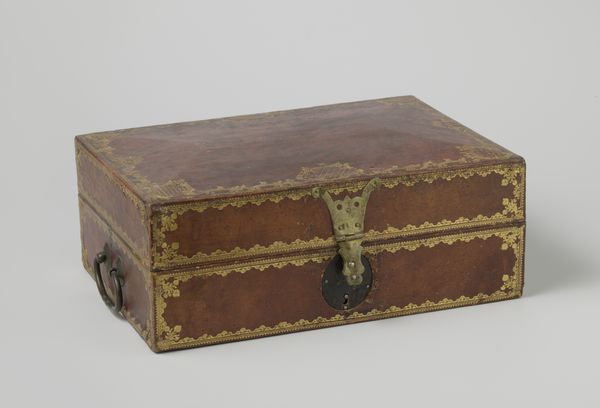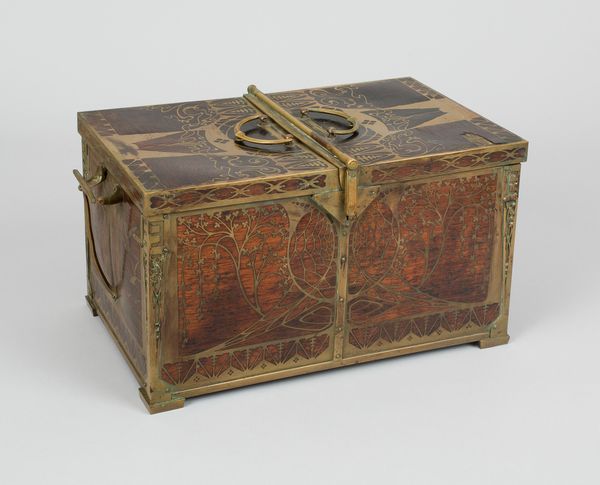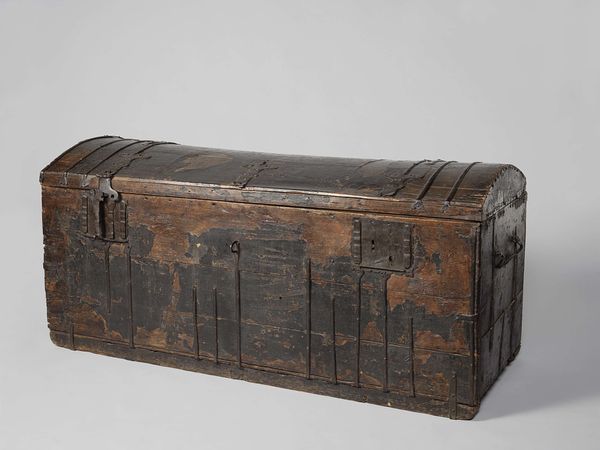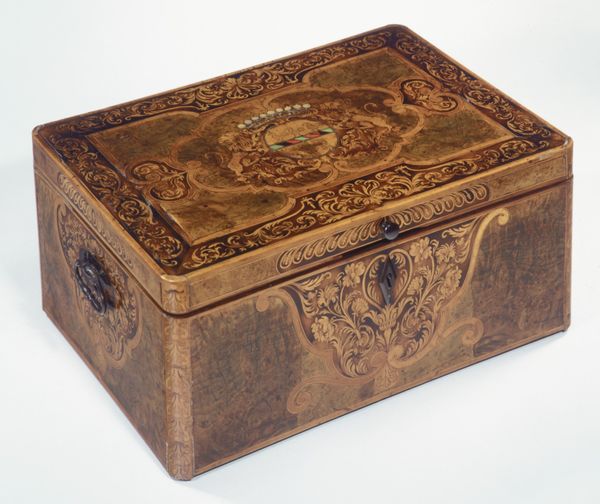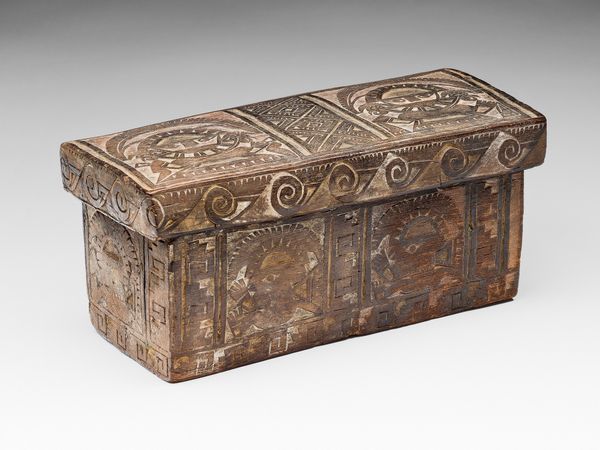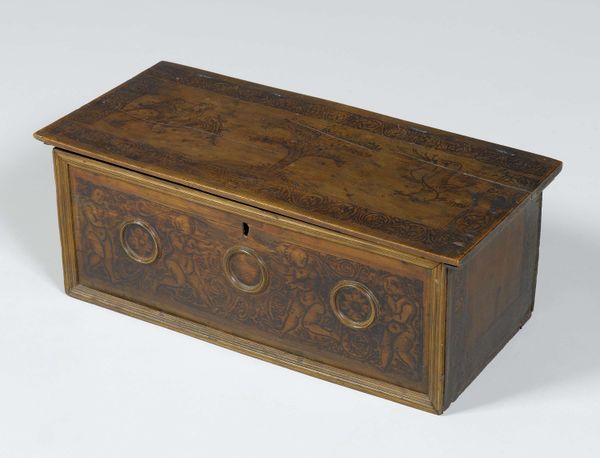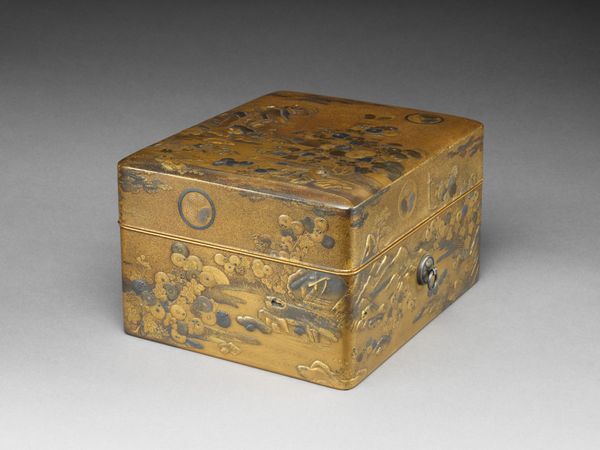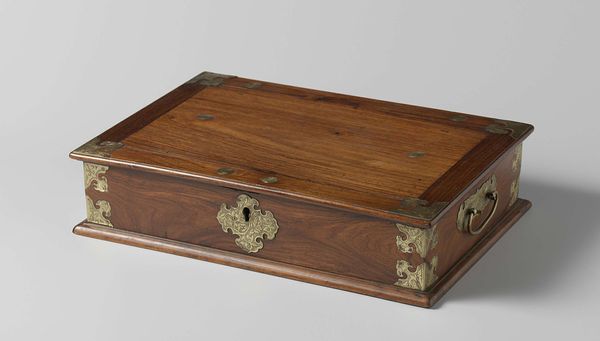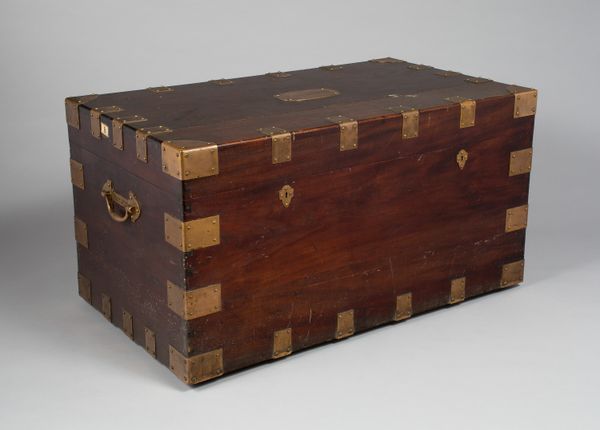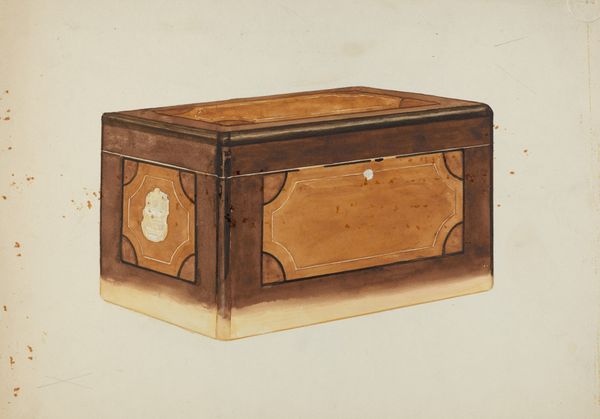
carving, relief, sculpture, wood
#
medieval
#
folk-art
#
carving
#
sculpture
#
relief
#
furniture
#
wood background
#
romanesque
#
folk-art
#
sculpture
#
wood
#
decorative-art
Dimensions: 60 × 130.5 × 55.9 cm (23 5/8 × 51 3/8 × 22 in.)
Copyright: Public Domain
Curator: Welcome! We're standing before an intriguing piece titled "Chest," believed to have been crafted sometime between 1780 and 1830. Its anonymous creator fashioned it from wood, employing carving techniques, and you can currently find it here at the Art Institute of Chicago. Editor: My immediate reaction is to the raw simplicity. The carving is unsophisticated but honest, like a hymn sung off-key with heartfelt devotion. I love how time and use have burnished the wood. Curator: Indeed, let’s dive deeper. The very material speaks volumes: wood, an accessible and democratic resource. This suggests the creator and its users belonged to a particular social bracket. We might assume this was crafted by someone with limited resources, embedding it firmly within the realm of folk art. Editor: True, but the arrangement of carved floral motifs speaks of a certain aesthetic ambition too. There’s a central flower dominating each face, surrounded by smaller, less distinct figures. I can make out something like scrolling tendrils, stylized, decorative. It does add something interesting and keeps it away from pure utility. Curator: Absolutely. While it might be categorized as furniture, the decoration elevates it, perhaps blurring those divisions between utility and art that modernism tried to establish. This chest tells of self-sufficiency within a specific socio-economic environment; it points toward an economy based on craft production. Editor: I find that assessment too literal, perhaps. Those blooms – and their rough symmetry – point towards visual and conceptual harmonies, even perfection, translated through basic form and available materials. What were they meant to contain, physically, but also spiritually or symbolically? Curator: Consider also the labor: the carving, the joinery, all manual and surely time-intensive. The fact someone dedicated all that effort indicates that either there was little economic expectation around labor, or it could be a gesture of profound personal significance. Were these family heirlooms, or part of larger exchanges within a local culture of craft production? Editor: Its simple but rugged form evokes the weight of generations, I see within this piece a microcosm of human creativity, in a small village maybe: how limited tools transform nature, through labor, into a humble celebration of something truly unique. Curator: The piece challenges traditional understandings. It gives us a chance to understand not the market or "art world" of the era, but folk and art interacting within small communities. Editor: Perhaps the division does more harm than good, yes. Viewing the work under a different lens of material allows new stories to become available to everyone.
Comments
No comments
Be the first to comment and join the conversation on the ultimate creative platform.
